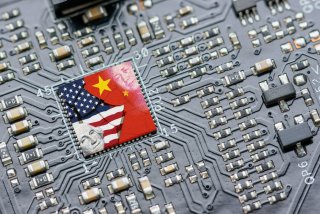Will China Become the World’s Technology Superpower?
China’s rising technological capacity has become one of the main issues in Washington’s bilateral relations with Beijing
In today’s fraught international environment, technological innovations such as artificial intelligence, automation, robotics, quantum technology, and space technology generally provide exceptional advantages to states and shape global power competition. China, which has attracted attention with its investments and policies in these areas, has started to emerge as a significant opponent of the United States.
China aims to take advantage of the political, economic, military, and commercial opportunities offered by innovative technologies to become the world leader in technology. China’s strategy, in which all Chinese state mechanisms act together, intends to increase support for state-owned enterprises, prioritize research and development activities, ensure high-tech industrialization, and boost innovation programs. But what does this approach, which has recently worried Western countries, mean?
China’s technological pragmatism
In early 2006, China’s cabinet declared that it sees innovative technology as a strategic choice within the National Medium and Long-Term Plan for the Development of Science and Technology (2006-2020). In this context, China, which focuses on reinforcing its capabilities in areas such as unmanned aerial vehicles and space, has started to popularize using digital technologies and automation in line with its five-year development plans. Under the 973 Program, which started in 2009 under the coordination of the Ministry of Science and Technology, China has increased its support for many scientific programs, including quantum technology, space and satellite technologies, cyber capabilities, artificial intelligence, cloud computing, automation systems, and robotics.
China, which codified its technology goals in 2015 when it announced its “Made in China 2025” and Internet Plus plans, has particularly focused on investments in artificial intelligence, quantum technologies, and big data. Technological development also provides large-scale economic opportunities to China, though challenges remain in developing high-tech industry and increasing market share. Against an actor with big technology companies like the United States, Chinese policymakers are trying to increase China’s capacity and to become an actor that can compete in the global market with companies such as Alibaba, Tencent, Baidu, Huawei, and Xiaomi.
Another purpose of China’s investments in innovative technology is to integrate these capabilities and other dual-use technologies into the military area. China under President Xi Jinping began reforming the People’s Liberation Army (PLA) in 2015 as a part of its civil-military integration policy, and has since improved the PLA Strategic Support Forces’ capabilities in areas, including space, cyber war, and electronic warfare. Thus, while modernizing its army, China also is aiming to implement a new military doctrine based on competition in space and future wars.
In line with this doctrine and the goal of restructuring the armed forces, state-owned companies, private technology companies, universities, and research centers are in partnership with the Chinese military. At this point, quantum technology, cyber capabilities, space programs, automation, robots, and artificial intelligence stand out as the basic components of China’s civil-military integration strategy. China, which established the Integrated Military and Civil Development Central Commission in 2017 to coordinate civil-military integration policies, has given this commission broad powers to determine and supply needs.
China, which sent a quantum satellite into space in 2016 to raise its military capabilities, has sought opportunities to improve its intelligence, surveillance, and reconnaissance capabilities and gain an advantage over global rivals. Similarly, China’s 360 Enterprise Security Group, the country’s first civil-military cyber security innovation center, has started to create cyber defense systems for military needs.
Global competition in the shadow of innovative technology
For Washington, China’s rising technological capacity has become one of the main issues in bilateral relations with Beijing. Given American decisionmakers’ desire to maintain Washington’s global leadership in economic, military, and technological spaces, Beijing’s civil-military integration and development of dual-use technologies have become crucial challenges for the United States. Therefore, as early as the 2010s, Washington under the Obama administration adopted a strategy to limit China’s rapid economic rise. After President Donald Trump was elected, he adopted a more aggressive policy involving economic and technological sanctions. The sanctions-based policy has inflicted significant losses on Chinese companies such as Huawei. Washington’s policy of combating China continues under President Joe Biden, although the methods are different.
Despite this, it can be said that Washington’s China policy is not clear yet. However, four crucial parameters can be discerned: maintaining its technological, economic, and military leadership; limiting China’s influence in the technology market by deepening cooperation with its allies; producing alternative technologies; and building a techno-political structure against its rivals.
For instance, NATO’s close focus on China’s technological rise is a significant indicator of the West’s concern. Western companies have been encouraged to limit cooperation with China and, in some cases, restrictions have been legislated. Efforts have also been made to limit Beijing’s acquisition of Western companies.
However, the conditions and areas of competition in today’s world are not solely based on the security paradigm. The current global order’s institutions and actors closely interact with China. In other words, in today’s competitive environment, there is no bipolar structure. Many actors, including the United States and its allies, must interact with China in diverse fields. This situation complicates the scope and future of the anti-China campaign.
Moreover, technological competition is not only limited to physical or geopolitical spaces. The competitive environment reaches beyond states, institutions, companies, and other actors to include information and data-based areas. This competition in the digital space is not an area where states, governments, or other actors—even hegemonic ones—can exercise direct dominance. This situation heightens the importance of discussions about the future of today’s competitive environment.
Mesut Özcan is a Ph.D. student at Sakarya University Middle East Institute studying how innovative technologies will shape security and international competition.
Image: Shutterstock.

